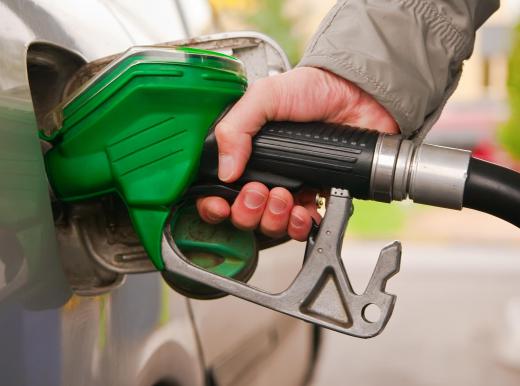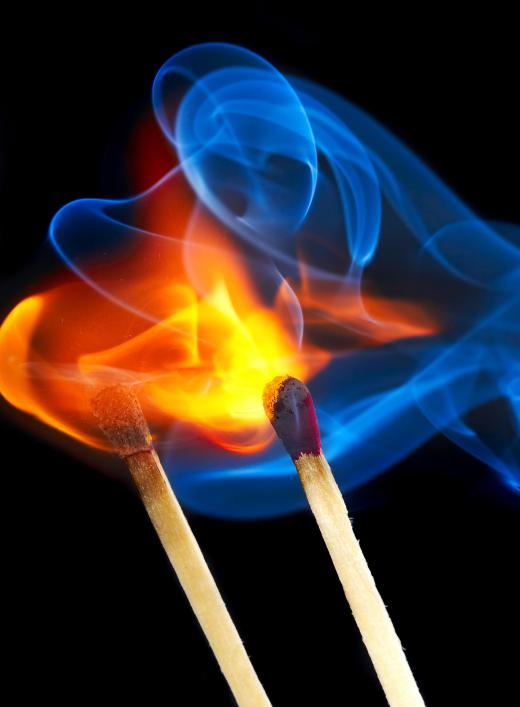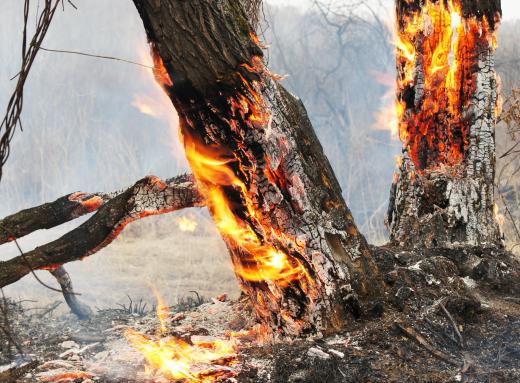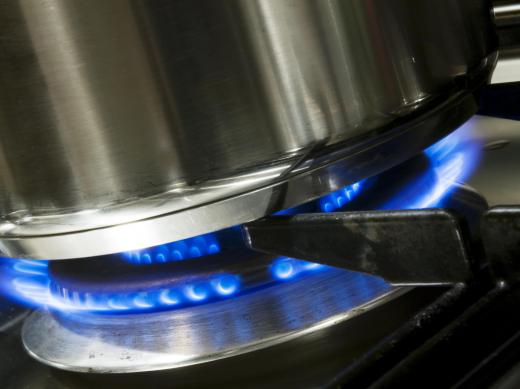What is the Combustion Process?
Put simply, combustion means to burn. For the combustion process to take place, fuel, oxygen, and an ignition heat source are required to start a chemical chain reaction; in a campfire, for example, wood is the fuel, the surrounding air provides the oxygen, and a match or lighter can ignite the fire. Increasing any of these elements will increase the fire's intensity, while eliminating any one of them will cause the process to stop. If the campfire is smothered with water or dirt, for example, the oxygen can no longer get to the heat and fuel, and it goes out.
Fuel

Fuel is the substance that burns during the combustion process. All fuels contain chemical potential energy; this is the amount of energy that will be released during a chemical reaction. How much energy a substance releases as it burns is called the heat of combustion. Each fuel has a specific energy density, or how many megajoules (MJs) of energy are produced per kilogram (kg) of the substance; methane, for example has an energy density of 55.5 MJ/kg, meaning that it can supply more energy than sulfur at 9.16 MJ/kg.

A wide variety of substances can be used as fuels, but hydrocarbons are some of the most common. These include methane, propane, gasoline, and jet fuel, to name just a few; all fossil fuels, including coal and natural gas, are hydrocarbons. Other substances that are commonly used as fuels include hydrogen, alcohol, and biofuels, like wood.
During combustion, fuel is turned into heat and exhaust. When gasoline burns, for example, it produces water (steam), carbon dioxide, nitrogen, carbon monoxide, and other elements. Burning can also release particulates, which are tiny particles that float in the air; those released from burning fossil fuels and wood often contribute to air pollution. Exhaust can be used for beneficial purposes, however, such as providing the thrust that pushes a rocket into the air. Most exhaust is in the form of a gas because of the heat the combustion process produces, but it can also be in liquid or solid form.
Oxygen

For fuel to burn in the combustion process, it must also have oxygen. The most common source is the air, which contains about 21% oxygen. Other sources, often known as oxidizers or oxidizing agents, include hydrogen peroxide, potassium nitrate, and many more. When an oxidizing agent is introduced to a fuel, it releases oxygen and can increase the speed at which the fire burns.

Like fuel, oxygen doesn't have to be in gas form, although that is very common. In a solid rocket, for example, a solid oxidizer is mixed with the fuel to create the propellant, which burns when ignited and propels the rocket forward. The space shuttle and other spacecraft use liquid oxygen as part of the combustion process.
When a fire does not have enough oxygen, it does not burn completely. This incomplete combustion produces carbon monoxide, carbon (soot), and other particulates which contaminate the air. Incomplete combustion in a fireplace or furnace of a home can release toxic gasses and be very dangerous.
Heat

Heat or ignition is what starts the combustion process. Since heat is also produced when something burns, once the process starts, additional heat is not always necessary to keep the chemical chain reaction going. The initial spark that triggers the chemical process can be provided by a flame, friction, or even the heat of the sun.
In cases of spontaneous combustion, fermentation or oxidation can create enough heat to start a fire. In a compost pile, for example, bacteria may begin to break down the organic compounds, creating enough heat and oxygen to cause combustion. Some materials — called pyrophoric substances — ignite when exposed to air or water; phosphorus and plutonium are two examples. When these materials encounter a fuel source, they can start a fire that's very difficult to put out.
Controlling the Combustion Process

As all three parts are required for combustion, increasing or decreasing any of them will affect the process. Increasing the amount of oxygen added to a fire by using an oxidizing agent, for example, will make the fire burn faster. Removing or reducing the fuel source will make it burn smaller or die out.
There are three basic ways to stop the combustion process:
- take away the fuel,
- remove the oxygen,
- and/or take away the heat.
Combustion may also be stopped by stopping the chemical chain reaction that creates flames. This is especially important when certain metals — like magnesium — burn because adding water to the fire will only make it stronger. In such cases, dry chemicals or halomethanes are used to stop the reaction.
Which of these is the best way to stop a fire depends on the type and the size of the fire. In a house fire, for example, firefighters use water or foam to stop oxygen from getting to the fuel and to reduce the temperature. While water can be used on a forest or wildfire, removing new fuel for the fire by clearing brush and dead vegetation from the area is often an important part of stopping it.
AS FEATURED ON:
AS FEATURED ON:
















Discussion Comments
The understanding of the combustion process ultimately led to the invention of the modern combustion engine. This science changed the world forever and the ways in which people travel, manufacture products, and live their everyday lives.
Post your comments